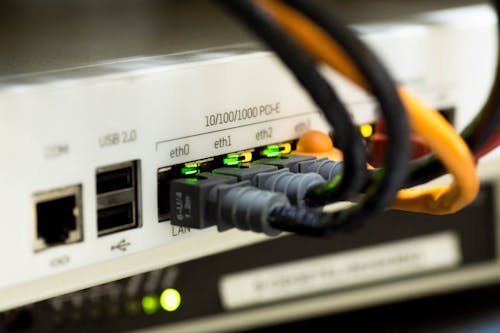Unlock the Power of IoT Safely: Tips for Securing Internet of Things Devices
In today's tech-savvy world, the Internet of Things (IoT) has revolutionized the way we operate our businesses. Smart devices like thermostats, cameras, and even coffee makers have made our lives easier. But here's the catch – they've also made us more vulnerable to cyber threats. As a cybersecurity expert who specializes in helping small to medium-sized businesses, I've seen firsthand how these IoT vulnerabilities can wreak havoc on your operations. So, let's dive into this issue and discuss how to shield your smart devices from potential hacks.
The IoT Revolution: Blessing or Curse? 
Before we delve into the nitty-gritty of IoT vulnerabilities, let's take a moment to appreciate the convenience these devices bring. From optimizing your office's energy consumption to enhancing security through smart cameras, IoT devices offer a world of possibilities. However, with great power comes great responsibility, and that responsibility involves safeguarding your digital assets.
Understanding IoT Vulnerabilities
- Weak Passwords
Think about your Wi-Fi password for a moment. Is it something simple like "12345678" or your birthdate? If so, you're not alone. Many businesses overlook the importance of strong, unique passwords for their IoT devices. In one memorable case, a small business owner I worked with had his smart thermostat hacked because he used a weak password. The hacker managed to control the thermostat remotely and even demanded a ransom to relinquish control!
Tip: Always use strong, complex passwords for your IoT devices. A combination of uppercase letters, lowercase letters, numbers, and symbols is your best bet.
- Outdated Firmware
IoT devices require regular updates to patch security vulnerabilities. Sadly, many businesses neglect these updates, leaving their devices susceptible to exploitation. Just like with your smartphone or computer, failing to update your IoT devices is akin to leaving your front door unlocked.
Tip: Enable automatic updates for your IoT devices whenever possible. Check for firmware updates regularly and apply them promptly.
- Default Credentials
Manufacturers often ship IoT devices with default usernames and passwords. It's like giving potential hackers a roadmap to your digital kingdom. Cybercriminals can easily find these default credentials online and gain unauthorized access to your devices.
Tip: Change default usernames and passwords immediately upon device installation. Use unique credentials for each device, and avoid using easily guessable combinations.
- Inadequate Encryption
IoT devices communicate over the internet, and this communication needs to be secure. Inadequate encryption can expose your data to prying eyes. Imagine if your competitors got hold of your confidential business data through your vulnerable IoT devices!
Tip: Ensure that your IoT devices use strong encryption protocols (e.g., WPA3 for Wi-Fi) and secure communication channels.
Steps to Secure Your IoT Devices
Now that we've identified common IoT vulnerabilities, let's discuss how to protect your smart devices effectively.
- Create a Network Segmentation
One of the best ways to enhance security is by creating separate network segments for your IoT devices. This isolates them from your main network, reducing the risk of lateral movement by hackers.
Tip: Consult with your IT team or a cybersecurity expert to set up network segmentation for your IoT devices.
- Implement a Robust Access Control Policy
Establish strict access controls for your IoT devices. Limit access to only authorized personnel, and consider using multi-factor authentication (MFA) for added security.
Tip: Implement MFA wherever possible and regularly review and update your access control policies.
- Regularly Update Firmware
As previously mentioned, keep your IoT devices' firmware up to date. Set a schedule to check for updates, and make it a routine task to ensure your devices remain secure.
Tip: Assign responsibility for firmware updates to a designated staff member or your IT department.
- Disable Unnecessary Features
Many IoT devices come with a multitude of features you might not need. Each feature is a potential entry point for attackers. Disable any features that your business doesn't use to reduce your attack surface.
Tip: Review the features of your IoT devices and disable any unnecessary ones.
- Invest in IoT Security Solutions
Consider investing in dedicated IoT security solutions that offer advanced threat detection and protection. These solutions can help identify and mitigate IoT-related vulnerabilities proactively.
Tip: Explore IoT security solutions tailored to your business needs and budget.
IoT vulnerabilities are a growing concern for businesses of all sizes. As a business owner, it's crucial to strike a balance between embracing the convenience of IoT devices and protecting your digital assets. By implementing the tips and strategies outlined in this article, you can significantly reduce the risk of falling victim to IoT-related hacks.
Remember, cybersecurity is an ongoing process. Stay vigilant, educate your employees about IoT security best practices, and regularly assess and update your security measures. By taking these steps, you can enjoy the benefits of IoT technology while keeping your business safe from cyber threats.


